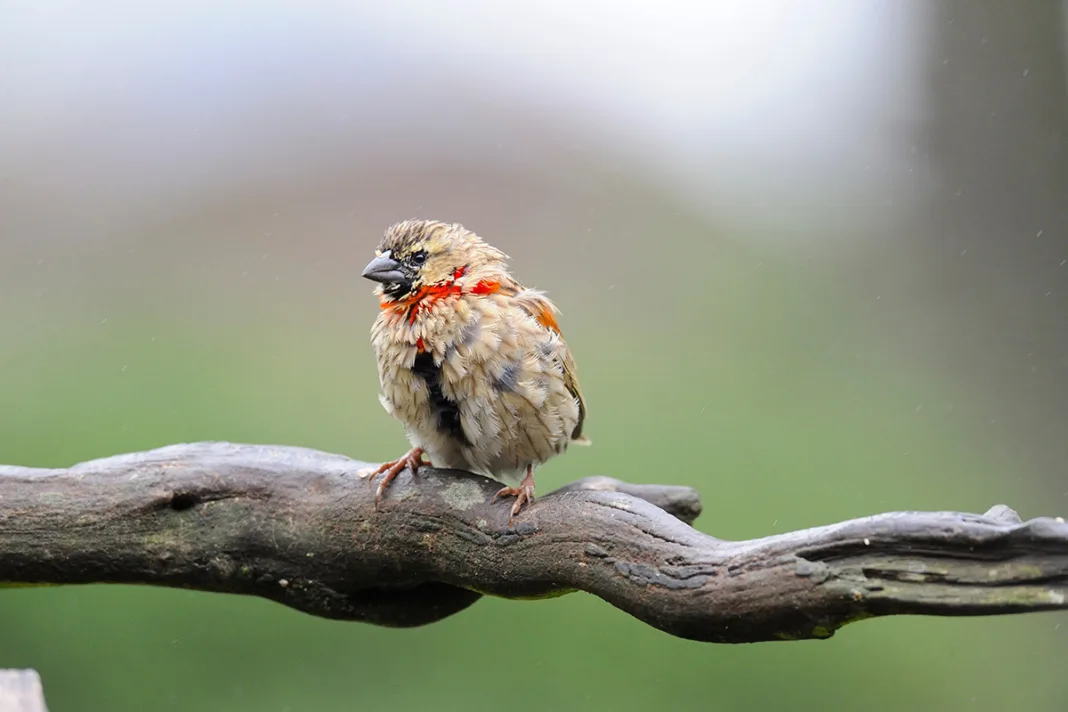All avian species go through the moult, but what exactly does this annual process involve? PAUL DONOVAN explains everything you need to know about the moult, from causes to the order that feathers are replaced, and how birdkeepers can assist their birds through it safely.
Moulting is a natural process that all birds go through at certain times of the year. Although it may be triggered by seasonal changes in temperature, it can be influenced by many other factors, such as age, sex and the breeding season. Moulting is the process by which a bird loses feathers to be replaced by new ones. Sometimes these are of entirely new colour or patterning, as may be evident during the breeding season.
The bird will not (in most cases) shed all its feathers in one hit to be replaced by a new set. This cycle is a gradual, but noticeable one. It may occur as a complete moult (all feathers are replaced over a period of time) or partial moult (only certain feathers may be replaced, such as the flight feathers).
Depending on the species, an adult bird will moult between one and three times a year. That being said, a lost feather will be replaced immediately rather than wait for the next moult, particularly if it is a flight feather.
The three categories
As I have just mentioned, the number of times a bird moults depends on the species, but all will fall into one of three groups.
- One complete moult per year: the bird sheds its entire plumage during one moult.
- One complete moult and one partial moult prior to the breeding season: in the first moult the bird will retain its basic plumage colour. However, prior to the breeding season, males will undertake a partial moult where they adopt their breeding colours. Females will also undertake this moult, but her plumage colour will not change.
- Two complete moults: very few birds undergo two complete moults. Those species that do, such as the marsh wren (Cistothorus palustris), live or move through rough/coarse vegetation. This impacts greatly on the feathers and can “wear them out” quite quickly. Generally, the first moult replaces the original basic plumage, while the second may or may not be into a different plumage. As a rule, one moult may take place during the summer with the second during winter.
The moulting cycle places great demands on the bird’s body and various biological processes will be affected during this period. Feathers are made from a protein called keratin, which makes up 85 per cent of their foundation. During the moulting of old feathers and the growth of new ones, a bird will begin to divert resources into this activity. In chickens, for example, one of the consequences of this is that the individual’s reproductive physiology is affected. This is seen visibly by the tailing off or temporary pause of egg production.
As both feathers and eggs require large inputs of protein during this process, the hen cannot assimilate enough for both egg and feather production. So, as moulting begins, egg productions stops as the protein is diverted into new feather production. Once the moulting cycle is complete, egg laying will commence.
One of the principle triggers to moulting is the circadian rhythm (sometimes referred to as the biological clock). Although closely interlinked, these are different entities and it is the body’s biological clock that actually drives this rhythm. According to the National Institute of General Medical Sciences, its definition is: “The biological clocks that control circadian rhythms are groupings of interacting molecules in cells throughout the body. A ‘master clock’ in the brain coordinates all the body clocks so that they are in sync.”
Other factors that can influence moulting include disease, parasites, sudden changes in the weather (excessively hot or cold), extended periods of broodiness, bullying, stress, overcrowding, changes in diet, a lack of food or water, continual hounding by predators and vaccination, etc.
Although the moulting bird may appear rather ragged and dishevelled, there is some order in which the feathers are moulted and replaced; newly emerging feathers are called pin feathers and are replaced in the same sequence they were lost. The first feathers to moult are those around the head, followed by the neck, breast, body, wings and finally tail.
A specific order of feather loss also takes place within some moulting divisions. For example, on the wings, primary feathers are moulted before secondary feathers. Even here, moulting is not random with those feathers nearest to the axial feather moulting first and then progressing towards the wing-tip feathers. So, number one feather is moulted first, followed by number two and then in sequence to number 10. As soon as the old feather has been moulted, the new pin feather appears. The wing moult is complete when all the primary and secondary feathers have been replaced.
The rate at which the primaries are moulted can indicate whether that bird is a late or early moulter. Late moulters moult their primary feathers several at a time, whereas early moulters will moult theirs one at a time. As the pin feathers begin to appear after the old feathers have been moulted, clusters of similarly sized feathers appear on late moulters. On early moulters they may not be as noticeable. It is not unknown for some late moulting birds to carry all their primary feathers through to the following year.
Paul Donovan is a biologist with 30 years’ experience working in zoological collections where he looked after birds and reptiles.
Find more news and articles like this on the Cage & Aviary Birds website. Subscribe to Cage & Aviary Birds magazine now.


